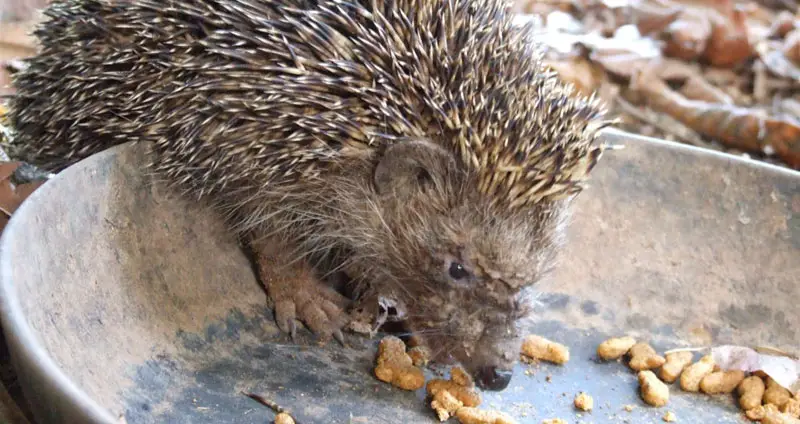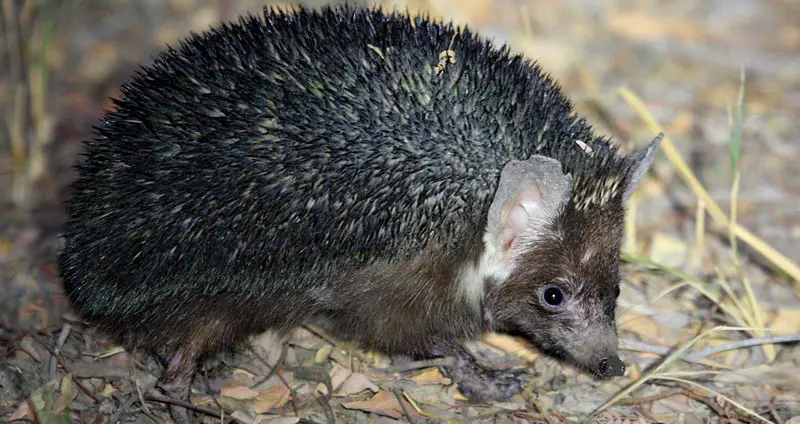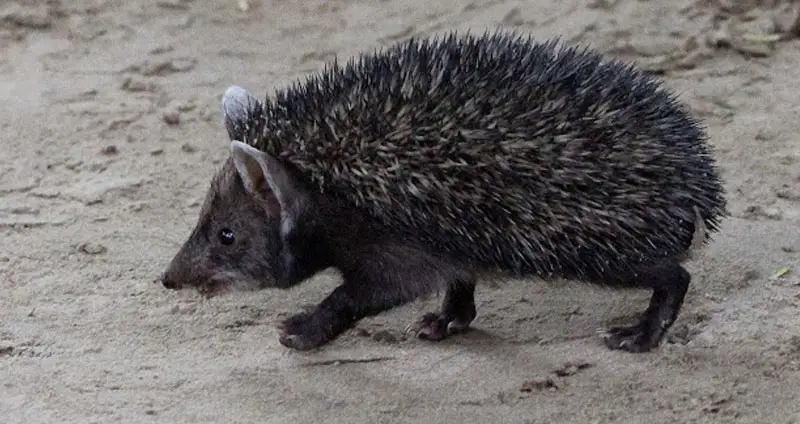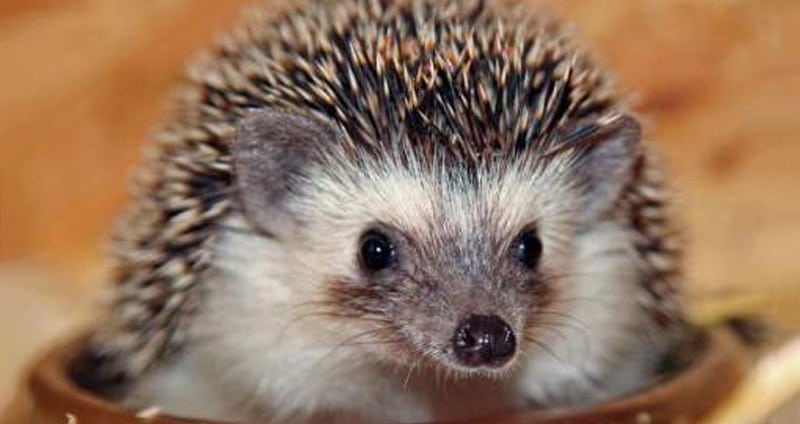Hedgehogs are some of the most beloved animals that exist today. Their unique, adorable appearance makes them a highly desired pet for a lot of people, and their docile personality really rounds things out.
However, not a lot of people know that there are many different types of hedgehogs around the world! Each of these breeds comes from a different region and has unique characteristics that differentiate them from other breeds.
So, what exactly are those 16 types of hedgehogs? Where do they come from, what do they look like, and how different are they at their core? This post aims to go into great detail in answering those questions.
Table of Contents
How Many Types Of Hedgehogs Are There?
- European Hedgehog
- Southern White-Breasted Hedgehog
- Northern White-Breasted Hedgehog
- Amur Hedgehog
- Bare-Bellied Hedgehog
- Brandt’s Hedgehog
- Daurian Hedgehog
- Desert Hedgehog
- Four-Toed Hedgehog
- Hugh’s Hedgehog
- Indian Hedgehog
- Indian Long-Eared Hedgehog
- Long-Eared Hedgehog
- North African Hedgehog
- Somali Hedgehog
- Southern African Hedgehog
16 Different Types Of Hedgehogs
There are 16 primary types or species of hedgehogs that exist today. Each of these 16 species comes from Europe, Africa, or Asia and can either look very similar to different to other species.
So what exactly are these 16 species?
1. European Hedgehog


The European hedgehog, or Erinaceus europaeus, is frequently referred to as the “common hedgehog”. This species is found in a variety of different countries in Europe, including Spain, France, Italy, the United Kingdom, and several others. It can survive across a wide variety of different habitats, thus resulting in its widespread existence.
Physically, E. europaeus is likely the largest species of hedgehog, growing to 10 inches or more in length and weighing around 2.4 pounds or more. Their general color is a general black and brown mixture, but can appear blonde in some cases with leucistic forms.
In general, these are hedgehogs that are widely accepted by most people. They’re largely nocturnal and quite hesitant in nature, with the only aggressiveness occurring between two males. However, there has been a decline in their population in recent years, with an estimated fewer than a million hedgehogs living in Great Britain today.
2. Southern White-Breasted Hedgehog


Also known as Eranaceus concolor, the southern white-breasted hedgehog is very similar in several ways to European hedgehogs. In fact, for a long time it was thought that these two species were simply one species. They key physical difference between these two species is that E. concolor has a white spot on its chest. This makes it difficult to identify this species from afar.
Another difference between this hedgehog and the European species is that the former doesn’t dig dens. Instead, it opts to create nests out of grass in quiet locations. It’s also located in a smaller region, randing from Eastern Europe to Western Asia.
3. Northern White-Breasted Hedgehog


The northern white-breasted hedgehog, Erinaceus roumanicus, was originally thought to be a subspecies of its southern counterpart, but was eventually determined to be its own species. It has a much larger reach than the southern white-breasted hedgehog, too, spanning from Poland to Greece and all the way to Siberia. With its widespread existence, there hasn’t been a significant population decline.
This species does have a white spot on its chest, but it also differs from the previous two hedgehogs due to its slightly different jaw structure.
4. Amur Hedgehog


Also known as the Manchurian hedgehog or Erinaceus amurensis, the Amur hedgehog is also very similar to the European hedgehog in both behavior and appearance, although it is lighter in color. It’s native to Amur Oblast and Primorye in Russia, in addition to locations in China and the Korean Peninsula.
It’s very similar to other species of hedgehogs in many ways, having the same sleep, behavioral, and mating patterns as a plethora of other species.
5. Bare-Bellied Hedgehog


The bare-bellied hedgehog, or Paraechinus nudiventris, was originally thought to be extremely rare and even extinct. However, specimen were recently found in India, thus changing its conservation status to ‘of least concern’.
This species is located in both the dry, arid regions and jungles of south-eastern India. More specifically, it’s quite common in the Indian states of Tamil Nadu and Andhra Pradesh. It was also found in some districts of Kerala.
No pictures of bare-bellied hedgehogs have been made available as of yet, but they are noted as having similar physical features to other Indian hedgehogs.
6. Brandt’s Hedgehog


The Brandt’s hedgehog, Paraechinus hypomelas, is quite a unique-looking desert hedgehog species. It features very large ears and darker fur and needles than other hedgehogs. It’s also noted that this species is quite a fast runner due to its lighter, but still effective, needle protection.
This species prefers to live in mountainous regions and arid deserts in Pakistan, Yemen, and Afghanistan. They often prefer to use natural shelters, but they are capable of digging dens when needed. Brandt’s hedgehogs will tend to resort to curling itself up in a ball for protection, but they may also jump at their attackers.
7. Daurian Hedgehog


The Daurian hedgehog, Mesechinus dauuricus, is quite a solitary and small hedgehog that’s located in the Transbaikal region of Russia and Northern Mongolia. This is a protected species that’s generally considered endangered, but its overall status is quite unclear. They were nearly wiped out in the mid-1960s due to excessive pesticide use, but they’ve made a gradual recovery since then.
This small species inhabits both steppes and forests that feature scrublands and rocky areas to help avoid predators. They live in dens, live to be about 6 years old, and generally don’t weight more than a pound.
8. Desert Hedgehog


The Desert Hedgehog, Paraechinus aethiopicus, is one of the smallest hedgehog species in existence, with adults only reaching about 6 to 8 inches in length. Despite its size, it’s quite a hardy species with a great defense mechanism. When threatened, a desert hedgehog’s muscles pull the outer layer of skin around the body, resulting in their quills sticking straight out in all directions.
Location-wise, desert hedgehogs are located in quite a few places. They’re found throughout a good portion of the Middle East and the northern edge of Africa. Due to their long history of desert dwelling, they’ve developed kidneys that allow them to go a long time without water. This has made this small species one of the toughest hedgehogs in existence.
9. Four-Toed Hedgehog


The four-toed hedgehog, also known as the African pygmy hedgehog or Atelerix albiventris, is a very common species found throughout the central and eastern parts of Africa. These guys thrive in crop fields and savanna biomes but have been found in thickets, bushes, woodlands, grasslands, and even suburban gardens.
Four-toed hedgehogs are a bit smaller than other species of hedgehogs, coming in around 8 to 10 inches long. They also have a very white body and dark head and walk on very short legs that feature only four toes per foot. This smaller species is quite active, though, and love to swim and climb and make a good deal of noise.
This hedgehog is commonly kept as a pet and is very affordable to purchase.
10. Hugh’s Hedgehog


Hugh’s hedgehog, Mesechinus hughi, is also referred to as the central Chinese hedgehog. This species is native to Manchuria and central China and prefers areas that are a lot more dry and arid, although they have also been found in forests and grasslands.
One interesting quirk about the Hugh’s hedgehog is that it actively searches for food even during the daytime and during rainy weather. This is a contrast to most other hedgehogs that search for food strictly during the nighttime.
11. Indian Hedgehog


Indian hedgehogs, Paraechinus micropus, are native to India and Pakistan. They primarily live in sandy desert areas, but can also be found in mountainous regions with a lot of water. While they are frequently compared to the long-eared hedgehog in mannerisms and appearance, there are a few differences that exist.
First of all, the Indian hedgehog is most known for its masked face that’s quite similar to that of a raccoon. It’s quite small in size, with males tending to weigh just below a pound and reaching about 6 inches in length. Despite their size, they are quite quick, but not as fast as long-eared hedgehogs. Indian hedgehogs also dig burrows that around 18 inches long and use these as shelter from predators.
12. Indian Long-Eared Hedgehog


Although it has a similar name to Indian hedgehogs and long-eared hedgehogs, the Indian long-eared hedgehogs (Hemiechinus collaris) are quite different. This species inhabits the more arid regions of Pakistan and the northwestern section of India. It’s quite a small hedgehog, only reaching about 6 to 7 inches and weighing between half a pound and a pound. A key characteristic of this hedgehog is its massive ears that help it find food and potential mates.
One interesting quirk that this species of hedgehog has is its mating ritual. For several days, the Indian long-eared hedgehog performs a complex dance around females before mating.
13. Long-Eared Hedgehog


The long-eared hedgehog (Hemiechinus auritus) has quite a few similarities to Brandt’s hedgehog. This species is native to a few regions, including the Middle East, the Eastern Mediterranean, and the more arid regions of East Asia. Despite this large range, the long-eared hedgehog has a preference for very moderate climates.
This species has quite a unique defense strategy. While most hedgehogs curl into a ball to defend themselves, they’ve taken a different approach. Long-eared hedgehogs are very fast hedgehogs — easily among the top 3 fastest species. They utilize this speed by first releasing their spikes and then fleeing to put as much distance between themselves and a predator as possible.
14. North African Hedgehog


The North African hedgehog, or Atelerix algirus, are a decently small species that rarely exceed 8 inches in length. It’s a species that’s naturally found throughout the northern edge of Africa, and it’s also been recently introduced into France and Spain. This makes it the only species of the four African species of hedgehogs that can be found outside of Africa.
Not too much is known about this specific species of hedgehog despite the fact that the very common African pygmy hedgehog is a cross between a North African and a four-toed. It resembles a European hedgehog, but it’s lighter in color, smaller, and a faster runner. It also lacks a widow’s peak of spines on the crown of its head, giving it a very unique look.
15. Somali Hedgehog


Also known as Atelerix sclateri, Somali hedgehogs are located strictly on the outer border of Somalia. This species hasn’t been extensively studied, so their personalities are not very well-known. However, it is known that it’s a hedgehog species that prefers to live in grasslands and other biomes that are quite open. They also have white bellies and legs that tend to be black or brown in color.
16. Southern African Hedgehog


Southern African hedgehogs (Atelerix frontalis) are found in the southern parts of Africa including Angola, Botswana, South Africa, Tanzania, and Zimbabwe. This is an average-sized hedgehog that’s covered with brown spines and fur and usually features a white stripe that runs across their forehead.
Southern African hedgehogs are relatively docile and slow, but can run quickly when threatened. During the day, this species tends to stay in a vegetation-covered area or simply a hole in the ground.
It’s also insectivorous, meaning that it has a diet consisting of primarily earthworms and crickets. Over time, though, it has been observed becoming more omnivorous due to habitat loss.
What Types Of Hedgehogs Are Kept As Pets?
As you can see, there is a diverse array of different hedgehogs that exist today. While some species are quite similar, there are others that are entirely unique and quite fascinating!
After looking at all of the different hedgehogs that exist, you may be wondering which of those can be kept as pets. Unfortunately, you can’t simply pick a species from this list and purchase one as your pet.
Most species of hedgehogs are either very difficult to come by, make for terrible pets, or are a mix of both of those traits. For example, long-eared hedgehogs are known to be very aggressive biters.
Other species, such as Southern African hedgehogs, are simply not sold as pets anywhere outside of their natural habitat. Some states in the US or entire countries even ban the ownership of hedgehogs entirely!
The most commonly-kept and bred hedgehog type by far is the African pygmy hedgehog. This species is known for its docile nature, small size, and adorable personality. Beyond this species, popularity drops way off.
There are some owners of Egyptian long-eared and Indian long-eared hedgehogs, but they don’t make great pets.
If you’re very interested in the many different types of hedgehogs highlighted in this post, your best option would be to turn to local wildlife reservations or zoos and inquire about their hedgehogs. However, many species are only kept local, so you may have to do a bit of traveling to see all 16 breeds that exist.


I seem to have a blonde hedgehog living in my garden. I live near Limoges in France.
I believe they are extremely rare. Should I just leave it be to look after itself?
I’m not sure about animal laws in France, but regardless, I would leave it be 🙂 If you want to help feed it, though, you could leave some cat food out for it like the ones we’ve highlighted in this post.
some years ago I was a night worker at a feed mill nr Oswestry and heard a scratching sound outside.when I put theoutside light on and looke over the stone wall I saw the biggest hedgehog I had ever seen before it was about the size of large houshold cat I could see it clealy how it became as big as that is a mystery have no idea if had been a pet at sometime in the past but according to statistics they do not grow that big but this one did.